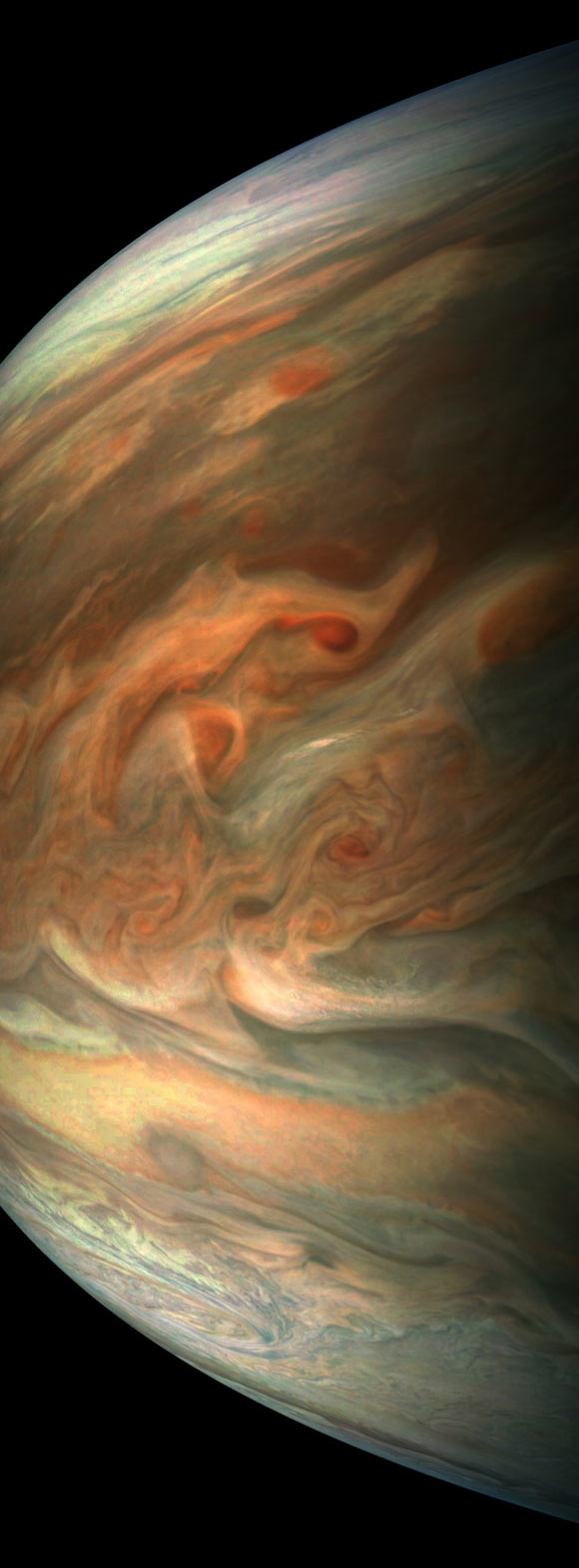This striking image of Jupiter was captured by NASA’s Juno spacecraft as it performed its eighth flyby of the giant planet.

This image was taken by NASA’s Juno spacecraft on September 1, 2017 at 5:58 p.m. EDT (2:58 p.m. PDT), and then processed by citizen scientist Gerald Eichstaedt. At the time the image was taken, the probe was 4,707 miles (7,576 km) from the tops of the clouds of the planet at a latitude of about minus 17.4 degrees. Image credit: NASA / JPL-Caltech / SwRI / MSSS / Gerald Eichstaedt.
Juno launched on August 5, 2011, from Cape Canaveral, Florida, and arrived in orbit around Jupiter on July 4, 2016.
The spacecraft is in a polar orbit around the gas giant, and the majority of each orbit is spent well away from the planet.
But, once every 53 days, its trajectory approaches Jupiter from above its north pole, where it begins a 2-hr transit — from pole to pole — flying north to south.
During these flybys, Juno is probing beneath the obscuring cloud cover of the planet and studying its auroras to learn more about its origins, structure, atmosphere and magnetosphere.
On September 1, 2017, at 5:49 p.m. EDT (2:49 p.m. PDT), the probe successfully made its eighth flyby of Jupiter.
At the time of the closest approach, or perijove (defined as the point in Juno’s orbit when it is closest to the gas giant’s center), the spacecraft was about 2,200 miles (3,500 km) above the giant planet’s cloud tops.
All of Juno’s science instruments and its JunoCam, a visible-light camera designed to capture remarkable pictures of Jupiter’s poles and cloud tops, were operating during the flyby to collect data.
The newly released image was taken just 9 min after Juno’s closest approach to Jupiter.
It shows two ‘points of interest’ (POI’s): ‘Whale’s Tail’ and ‘Dan’s Spot.’







